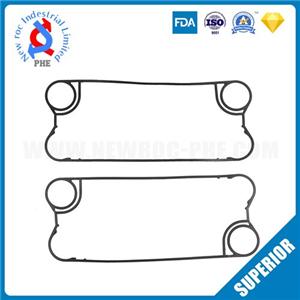Attention should be paid to corrosion in the process of maintaining the plate heat exchanger
Plate heat exchangers have many advantages, which can not only improve energy utilization, but also reduce operating costs. It has many advantages. In order to make everyone better use plate heat exchangers, here is our summary of plate heat exchangers. Maintenance and maintenance methods of the device.
1. Prevent scale formation and corrosion
There are two main ways: one is to use softened water as the supplementary water of the plate heat exchanger to reduce calcium, magnesium ions and chloride ions in the water, but this has a higher operating cost and requires strict monitoring of the hardness, pH, and pH of the circulating water in the system. The main technical indicators such as alkalinity, chloride, suspended solids, etc. should be adjusted in time; the most common method is to directly use tap water as supplemental water, and add scale and corrosion inhibitors to the system to prevent the formation of calcium and magnesium scale and corrosion under scale.
2. Eliminate or reduce the content of impurities such as suspended solids in circulating water
In dynamic circulating water, suspended solids include mud sand, residues, powder particles, biological slime, and equipment corrosion products such as iron oxide and copper oxide. It is understood that adding filters to the supplementary water and return water pipelines of the plate heat exchanger and cleaning them frequently can remove some large particles of suspended impurities. In the initial stage of operation, the backwater of the system shall be flushed and discharged. In order to remove the corrosion products during the shutdown period and the impurities left over from the construction. And in daily operation, sewage should be discharged regularly to reduce suspended impurities.
3. Adjust the appropriate flow rate
As far as possible, ensure that the flow velocity distribution in the plate heat exchanger should be uniform to avoid large velocity gradients and ensure uniform temperature distribution; under the premise of ensuring a reasonable pressure drop and not causing corrosion, increasing the flow velocity will help reduce fouling and prevent Corrosion under the scale.
When the plate heat exchanger is in use, the plate heat exchanger will be corroded due to various reasons, and once the plate heat exchanger is corroded, it will greatly affect the normal use of the plate heat exchanger. The following causes the plate heat exchanger The cause of corrosion.
1. After the heat exchanger plates are assembled, a multi-slit structure is formed, such as the contacts between the heat exchanger plates and the bottom of the heat exchanger plate sealing groove. The crevices are easy to cause the enrichment of Cl-, and the degree of local enrichment often far exceeds the ability of stainless steel to resist stress corrosion.
2. The stainless steel heat exchanger plates are stamped mechanically, and a certain amount of residual surface stress is inevitably left. For stainless steel sheets that do not contain molybdenum, it is difficult or even impossible to eliminate the residual stress on the surface. .
3. When the dirt on the surface of the heat exchanger plates is severe, the corrosive elements (Cl, S, etc.) in the medium may adhere to the dirt in large amounts and be concentrated in the cracks at the bottom of the dirt.
4. The harmful elements in the bottom of the sealing groove of the heat exchanger plates are often precipitated by the Cl in the binder due to the temperature rise. For example, the neoprene series of adhesives and compressed asbestos (containing CaCl2) often under water and steam conditions, the precipitated enriched Cl- and H+ form HCl, causing serious stress corrosion cracking at the bottom of the groove.




